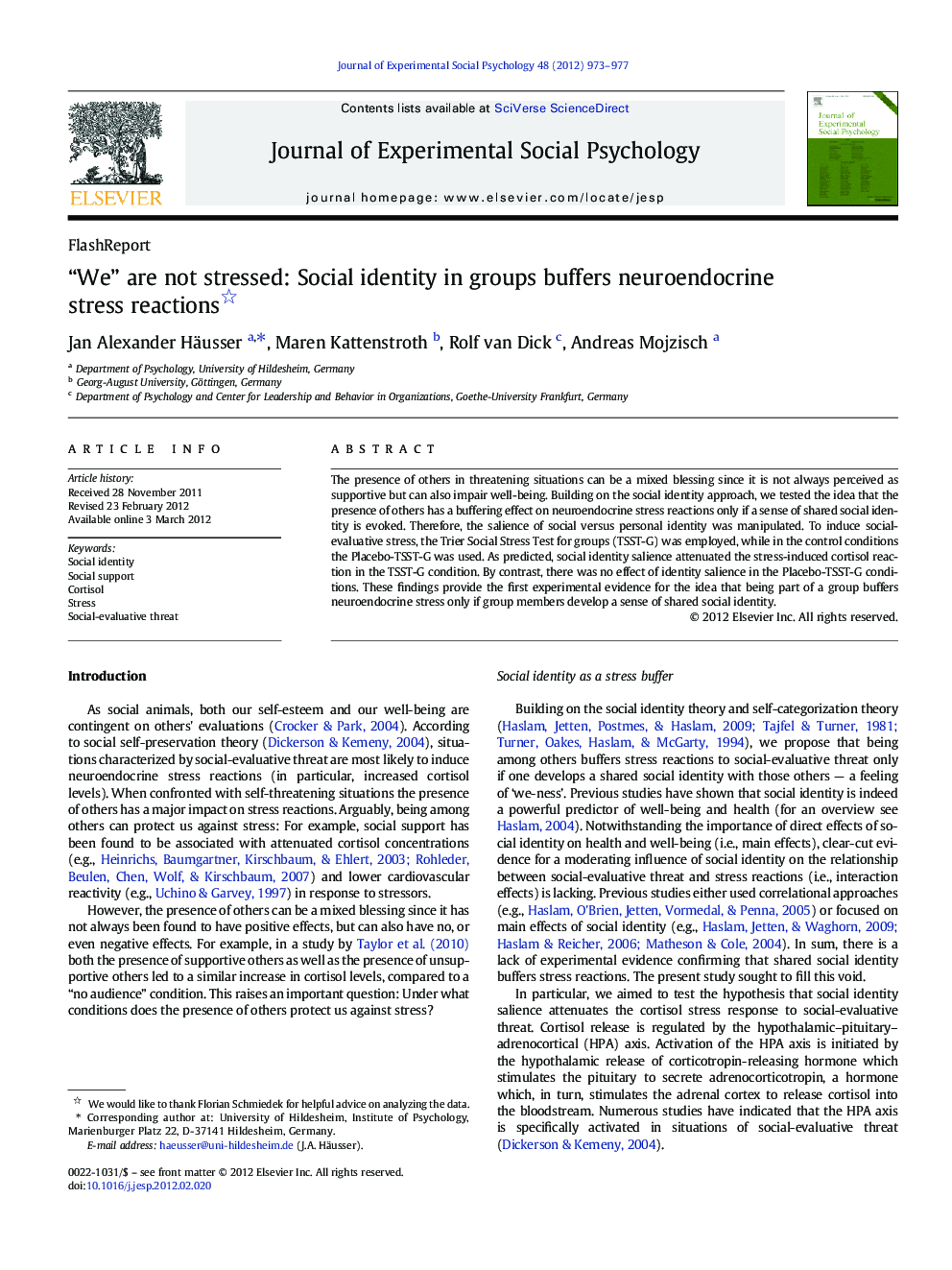| Article ID | Journal | Published Year | Pages | File Type |
|---|---|---|---|---|
| 948297 | Journal of Experimental Social Psychology | 2012 | 5 Pages |
The presence of others in threatening situations can be a mixed blessing since it is not always perceived as supportive but can also impair well-being. Building on the social identity approach, we tested the idea that the presence of others has a buffering effect on neuroendocrine stress reactions only if a sense of shared social identity is evoked. Therefore, the salience of social versus personal identity was manipulated. To induce social-evaluative stress, the Trier Social Stress Test for groups (TSST-G) was employed, while in the control conditions the Placebo-TSST-G was used. As predicted, social identity salience attenuated the stress-induced cortisol reaction in the TSST-G condition. By contrast, there was no effect of identity salience in the Placebo-TSST-G conditions. These findings provide the first experimental evidence for the idea that being part of a group buffers neuroendocrine stress only if group members develop a sense of shared social identity.
► We examined shared social Identity as a buffer of socio-evaluative threat. ► Social versus personal identity was manipulated. ► Trier Social Stress Test versus placebo Trier Social Stress Test was used as stress manipulation. ► Psychological and neuroendocrinological (cortisol) stress responses. ► Main result was that social identity buffered cortisol responses.
